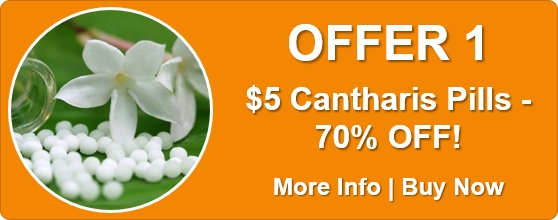Know Your Remedies: Chamomilla Matricaria (Cham.)
 Common Names: Chamomile; camomile.
Common Names: Chamomile; camomile.
General Information
Those needing Chamomilla (Cham.) are abnormally sensitive to ailments or pain. The pain feels unbearable and they respond with irritability and anger. Their complaints will be hostile, accusing and vehement. Anger or coffee / tea may also trigger pain. Children needing Chamomilla are hard to please and reject attempts to comfort or appease them. They cling and want to be carried, responding with anger or tantrums when put down. They may also kick, hit, or arch their back and scream angrily with earaches, teething or colic. One cheek may be red and the other pale.
Gastrointestinal / Digestive Problems
- Colic, especially in infants who arch their back with the crying.
- Colic worsened by anger or irritation.
- Stool liked chopped grass or spinach.
- “Rotten egg” odour to stool.
- Nausea after coffee or warm drinks.
- Yellow tongue and bilious vomiting.
Teeth / Dental Problems
- Painful and difficult teething that is worse for warmth or pressure (chewing).
- Green diarrhoea with teething.
- Toothache worse for warm food or drink; better for cold drinks.
Ear Problems
- Acute or chronic otitis media (middle ear infections) with oversensitivity to pain.
- Ear pain triggered or worsened by wind.
Menstrual (Period) Problems
- Spasmodic, intolerable cramping that may extend to thighs.
- Profuse bleeding with clots.
Fever
- Thirsty, restless, and irritable.
- Perspiration of scalp and covered parts.
- One cheek flushed, the other pale.
For Pets
- Mildly painful conditions cause oversensitivity and irritability.
- Irritability with teething.
Where do I find it?
Chamomilla (Cham.) is available from our online store as a single remedy, and as part of the following Complexes (combination remedies): Colic; Earache; Teething; Toothache.
Home Treatment Guidelines
Acute, Self-Limiting Conditions
Conditions like colds or minor injuries, which are short-term and typically improve on their own, can be managed at home with homeopathy. However, in emergencies or if symptoms worsen, contact your healthcare provider.
Chronic Conditions
These home treatment instructions do not apply for ongoing issues, whether mentioned above or not, like persistent allergies or chronic pain. You should consult a qualified homeopath for a personalized treatment plan to achieve the best results with homeopathy for chronic conditions.
How to Take the Remedy for Acute Conditions
- Take one pill or five drops of the remedy. The frequency depends on symptom severity. As examples:
- For life-threatening symptoms, take every 1 minute and seek emergency help immediately.
- For mild symptoms, take every 4 hours.
- Stop taking the remedy once you feel better. Resume if symptoms return.
- If no improvement after four doses, choose a different remedy or consult a professional homeopath.
- For more details on dosing, refer to: How Often to Dose with a 30C Homeopathic remedy.
- For information on the different potencies, read: Guidelines on which potency to use
Additional Notes From Past Masters
Homeopathy is a 200-year-old system of medicine. Early homeopaths recorded detailed notes on how remedies worked, including initial tests, remedy relationships, and their experiences. These writings were shared to improve homeopathic practice and now offer fascinating insights into past uses of homeopathy. Here’s an example, edited and modernised for clarity, from Leaders In Homoeopathic Therapeutics (1898) by E. B. NASH M.D.:
Leaders In Homoeopathic Therapeutics by E. B. Nash M.D.
Chamomilla Matricaria (Cham.)
Very irritable mood; snaps and snarls; will not speak or answer civilly; mad.
Exceedingly sensitive to pain, which makes her mad: numbness alternates with, or attends, the pains; sweats with the pains.
Excessive uneasiness; anxiety; agonized, tossing about; will only be quieted by carrying the child about.
High fever with sweating, especially on the head; thirsty; one cheek red and hot, the other pale and cold.
Dentition diarrhea; green stools, foul odor like rotten eggs, much colicky pain, abdomen bloated.
Cough dry < at night, when asleep, from tickling in throat pit; < cold weather and every winter.
Especially adapted to children and nervous, hysterical women.
Violent rheumatic pains drive him out of bed at night; compel him to walk about.
Burning of soles at night; puts feet out of bed.
Numbness with the pains.
* * * * *
Charles J. Hempel called this “the catnip of Homeopathy,” because it was particularly adapted to nervous affections, especially of children.
This is one of the remedies that finds its leading characteristic symptoms in the mind of the patient. To “boil down” all the different ways in which the Chamomilla mind can be and is expressed: “The patient is cross, ugly, spiteful, snappish. She knows it, admits it, and so does every one else. She will return mean, uncivil, spiteful answers to her best friends, and then confess her fault, to repeat it again and again, and stoutly affirms she cannot help it, she feels so.” This state of mind is always present in the marked Chamomilla case, whether it be adult or child.
Of course the young child cannot give vent to its feelings by talking, so it comes as near to it as it can by whining and crying, sometimes it seems without cause, and also when it shows by fever, diarrhea, teething and many other complaints that it is actually sick and suffering. It wants this or that thing, puts out its little hand for it, and when it is offered pushes it away and points to something else, to reject it in turn. Now the child does not know what it wants, but the homeopathic physician does. It wants a dose of Chamomilla.
This peevish disposition in which nothing pleases, takes possession of the child, mother, father or any and all grades and classes of subjects when Chamomilla is the remedy, and it is found in connection with all kinds of diseases. It is also especially adapted for ailments brought on by fits of anger. In short, it is the leading anger remedy of the Materia Medica.
The other leading anger remedies, or, for ailments brought on by anger, are Aconite, Bryonia, Colocynth, Ignatia, Lycopodium, Nux vomica, Staphisagria.
It is also one of the leading remedies for pain, and there is this peculiarity about it, the pain is not always in proportion to the gravity of the case, and we often see, for instance, in labor, a great deal harder pains of which the patient does not complain half so loudly. But in the Chamomilla case the patient is exceedingly sensitive to the pain and exclaims continually, “Oh; I cannot bear the pain.”
Many times have I met this condition in labor cases, and in the majority of them the cross, peevish, snappish, condition of mind accompanying, and seen it changed in a short time to a mild, uncomplaining, patient state, by a single dose of Chamomilla 200th.
This sensitiveness to pain is not confined to labor cases, but I have often observed it in neuralgias, toothache, rheumatism, etc., and the same happy results follows its use.
This condition of sensitiveness is often found in coffee drinkers, or in those who have been addicted to narcotics.
Chamomilla is very useful here. There is another sensation which is often found in conjunction with, or sometimes alternating with, this pain or sensitiveness, and that numbness.
It is found in rheumatism or paralytic states and is very characteristic. The pains of Chamomilla are oftener aggravated by heat than otherwise, but are not on the other hand, like Pulsatilla, ameliorated by cold. In fact, the patient is often very sensitive to cold, and cold air brings on troubles for which this remedy is specific.
I now call to mind a very painful case of rheumatism of the left shoulder in a middle-aged man. It was in my earlier practice, when I was prescribing for names more than I do now, and of course he got Aconite, Bryonia and Rhus toxicodendron, etc., but no relief. A wiser man was called in consultation and the patient was quickly cured by Chamomilla. When I asked the counsel what led him to prescribe this remedy he answered numbness with the pains.
Another condition which is met by this remedy is restlessness and sleeplessness. You will remember that we gave as the great trio of restless remedies Aconite, Arsenicum and Rhus tox That was right, but we did not say that those were all the restless remedies. Here we have another in Chamomilla.
Let me quote: “Violent rheumatic pains drive him out of bed at night, and compel him to walk about.” (Rhus tox., Ferrum met., Verat. alb) “Excessive uneasiness, anxiety, agonized tossing about, with tearing pains in the abdomen.” “The child can only be quieted by carrying it on the arms will not be quiet unless carried.” (Opposite Bryonia).
These symptoms represent in a few words the restlessness of this remedy. But some will ask, isn’t this similar to your trio of restless remedies? It is; but there are shades of difference and concomitant symptoms that decide between them all. And the true Hahnemannian is the man to recognize them.
There is no particular overwhelming fear, fear of death, etc., under Chamomilla as there is under Aconite. The patient is maddened; driven to desperation under Chamomilla; does not care whether she dies or not; had rather die than suffer so, and so we might draw lines of differentiation between this and other restless remedies, but it would take too long.
Each physician must get a habit of doing this for himself. In his ability to do this lies the superior skillfulness of the homeopathic practitioner. Without this he can only hope for indifferent success at most, and will be driven to all sorts of experiments, adjuvants, surgical measures and so forth which might be avoided, much to his own credit, and the advantage of his patient.
The sleeplessness of the Chamomilla patient is owing to the pain and excessive nerve sensibility and this remedy procures sleep by overcoming these troubles, which make the patient sleepless.
Now there are a few symptoms, when occurring in conjunction with the peculiar mind and nervous symptoms of this remedy, that confirm the choice of it, such as.
“Warm sweat on the head wetting the hair.”
“Pressing earache in spells; tearing pain extorting; cries.”
“Ears particularly sensitive to cold air.”
“One cheek red and hot, the other pale and cold.”
“Face sweats after eating or drinking.”
“Toothache if anything warm is taken into the mouth.” (Pulsatilla).
“Toothache recommences when entering a warm room.”
“Teeth feel too long.”
“Dentition with diarrhśa of green stools smelling like rotten eggs.”
“Hot and thirsty with the pains; also fainting. ” (Hep. sul.).
“Gastralgia in coffee drinkers; constrictive pain, or as if a stone were in the stomach. ” (Nux vom.).
“Wind colic; abdomen distended like a drum; wind passes in small quantities without relief.”
“Stools green, watery, corroding (Sulph.), like stirred eggs.”
“Stools hot, smelling like rotten eggs.”
“Metrorrhagia dark coagulated blood, flowing in paroxysms.”
“Menstrual colic, also following anger.”
“Labor pains press upward, or begin in back, and pass off down inner side of things.”
“Rigidity of os, pains unendurable.”
“After-pains also unendurable.”
“Children have spasms, from fit of anger in the nurse.”
“Cough from tickling in throat pit.”
“Cough dry, worse at night, especially while asleep, does not waken when coughing.” (Calcarea ost., Psorinum.)
“Chronic cough, worse in winter or cold weather.”
“Body chilly and cold; face and breath hot.”
“Heat and chill intermingled.” (Ars. alb.).
“Skin moist and burning hot.” (Bell.)
This does not by any means cover all the symptoms which indicate Chamomilla, but when they do occur it is strongly indicated and shows something of the range and usefulness of this remedy when given according to homeopathic rules.







